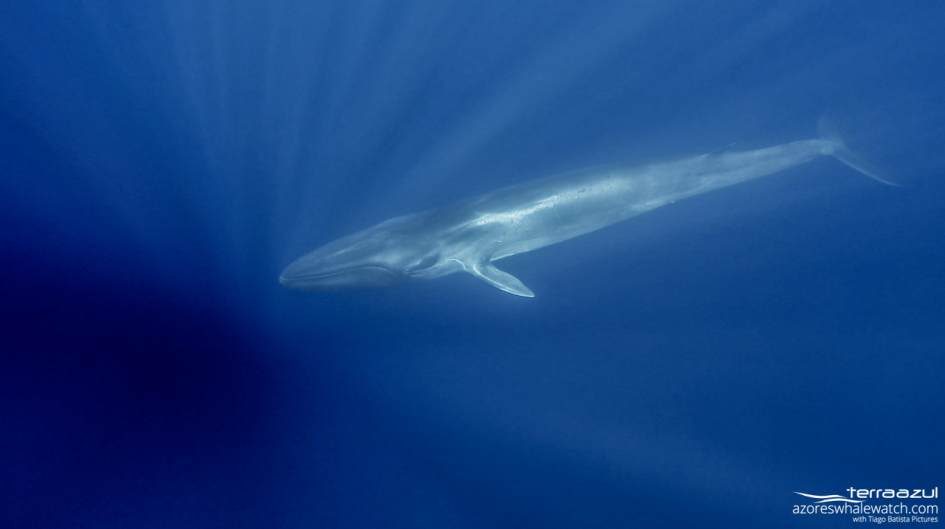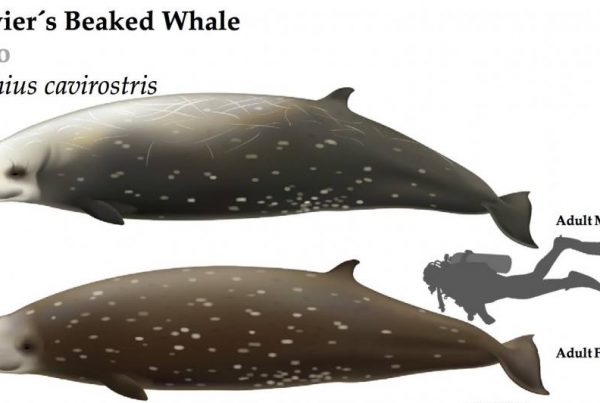
The Fin whale is the second largest animal ever known to have lived on the planet, ranging into all oceans. They have a characteristic asymmetrical coloration on their lower jaws. Fin whales are named for their prominent, hooked dorsal fin found near their tail.

Adult Fin Whale under the water
CHARACTERISTICS
- Latin name : Balaenoptera physalus
- Suborder : Mysticeti
- Family: Balaenopteridae
- Length : up to 27 m
- Weight : up to 85 tons
- Dive time : up to 20 minutes
- Dive depth: up to 600 m
- IUCN Status: Vulnerable

DESCRIPTION
Color: Dark brown/grey back with grey stripes behind the blowhole. The lower right jaw is white, like the belly and under pectoral fins.
Head: V-shaped when seen from above.
Fins: Dorsal fin is falciform or triangular shaped, about 60 cm in length, located on the two-third of the body. Caudal fin deeply notched reaching 5-6 meters in width.
Baleen plates: Grey-brown 260 to 480 baleen plates on each side of the upper jaw. On the right side, 20 to 30 % of the baleen plates are white or light yellow.
Ventral grooves: 56 to 100, the longest starting from the chin and ending at the navel.
Blow: 4 to 6 meters

Fin whale blowing
LIFE HISTORY
DIET
Fin Whales feed almost exclusively on krill and copepods at the surface or at depths up to 180 meters. Fin Whales can also be an opportunistic feeder and prey on capelins, young herrings and squids according to the time of the year and the region. Fin Whales consume about three tons of food daily, during their feeding season.
REPRODUCTION
Sexual maturity is reached at around 6-10 years (female) and 8-12 years old (male). Breeding and calving take place towards te end of Fall/beginning of Winter (for the Northern Hemisphere). Females give birth to calves every 2 to 3 years and the gestation lasts about one year. At birth, a new born measure around 6 meters.
SOCIAL BEHAVIOR
Fin Whales are solitary cetaceans, but can be found in pairs of adults. It is a migratory species moving from colder feeding grounds to the equatorial temperate water for breeding and nursing.

Breaching Fin Whale showing the white lower jaw on its right side © Chris Liu
VOCAL BEHAVIOR
Fin whales are using different ways of communication: moans, groans and various pulsed sound ranging from 20 to 100 Hertz. You can listen a Fin Whale communicating in this recording collected by NOAA Fisheries.








